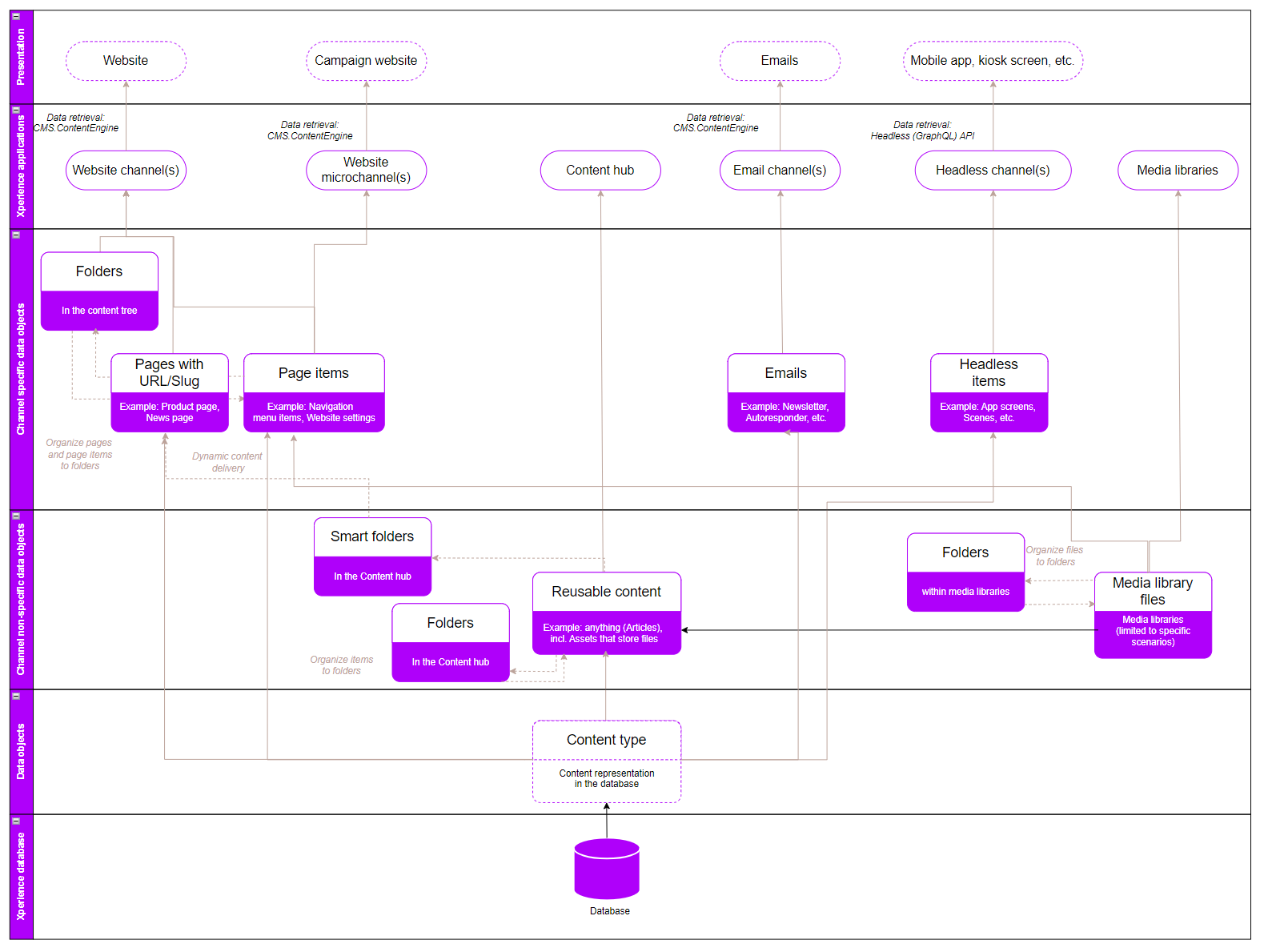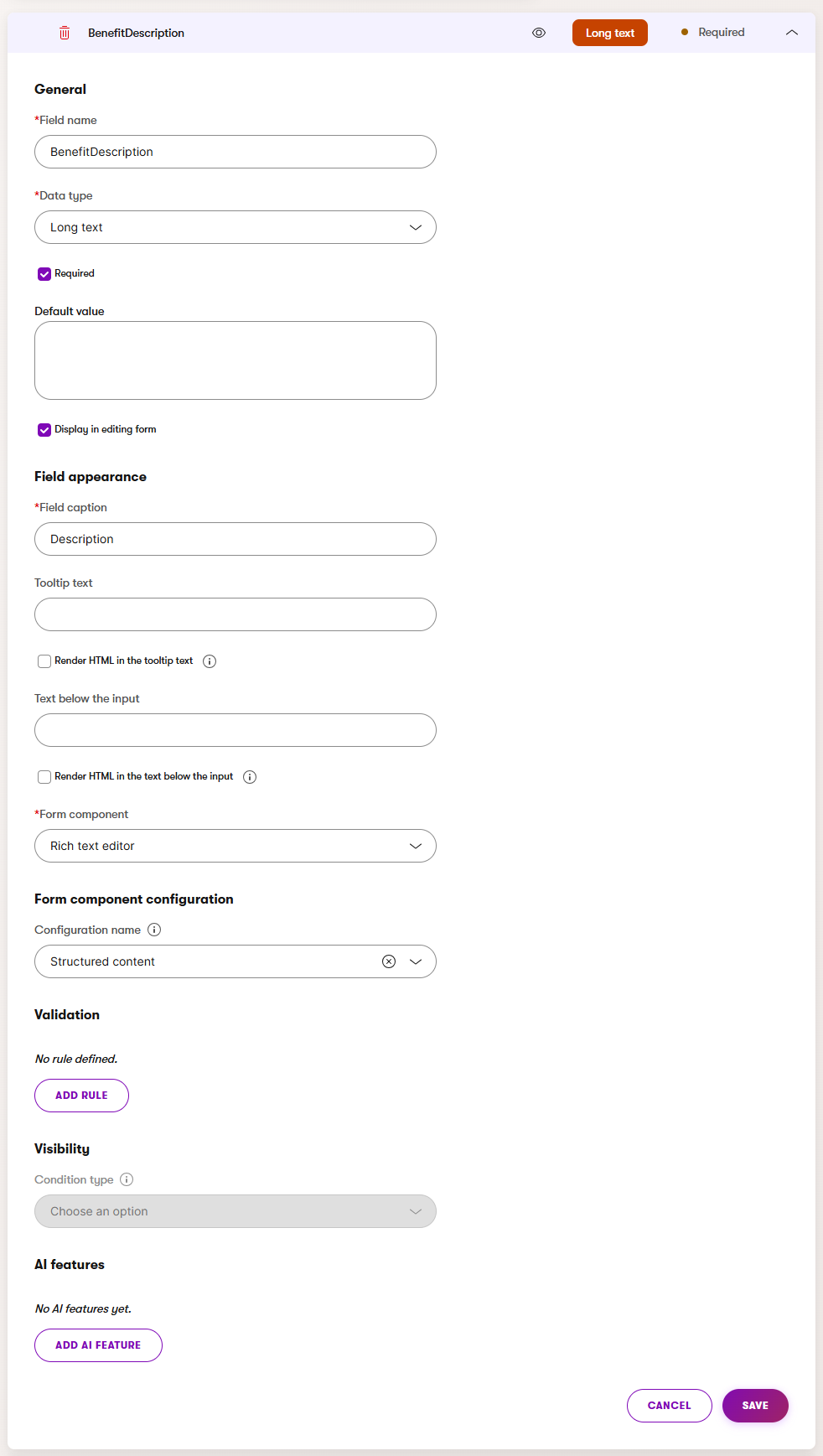Module: Content modeling guide
8 of 28 Pages
Understand how Xperience stores digital content
In Xperience, all content is based on content types. You already know that a content type is a blueprint that defines data structure, functionality, and behavior for all content items editors create from this type. Based on this definition, reusing content requires storing it in a presentation-independent manner, i.e., in a structured format.
Xperience uses different content types depending on the purpose. Each has its own storage options and ways of connecting to other stored content.
- Reusable content type – Stores data in the Content hub. This content isn’t tied to any specific channel. Editors can reuse it across multiple channels, such as websites, emails, or headless applications.
- Webpage content type – Used in the website channel. Web pages can store data directly or act as a container displaying reusable content from the Content hub (or a combination of these approaches).
- Email content type – Used in the email channel. Emails can store data directly or display data from webpages or reusable items stored in the Content hub.
- Headless content type – Used in the headless channel. Headless items can store data directly in the headless channel or display reusable content from the Content hub.
We’ll discuss each of the options further in this and other dedicated materials. The following diagram overviews the storage options in Xperience.

Content types from the data perspective
Content types that store data in a structured format allow editors to create items in a form-like interface where they input data. The editing forms create a unified editing experience, and adding content in the Content hub feels like filling out an online form. From a data perspective, these fields correspond to database columns. Developers define content types in the Content types application.
When developers create content types, they configure:
- Fields that define the data structure of the content type.
- Editing form layout that creates the interface editors use to create and modify the content items.
- Usage of the content type:
- Reusable content types are building blocks of reusable content meant to be linked together to form further content.
- Content types for pages are used in website channels to form pages.
- Content types for email are used in email channels to form emails.
Developers use the Content types application to define the data model of the Xperience application. They create content types based on the project’s business requirements using an easy-to-use admin UI consisting of form fields or ready-made form components.

The content type is stored in a coupled database table; its fields represent database columns. For example, Kbank’s News content type can have a coupled table named Kbank_News and columns defined as NewsTitle, NewsSummary, or NewsText.